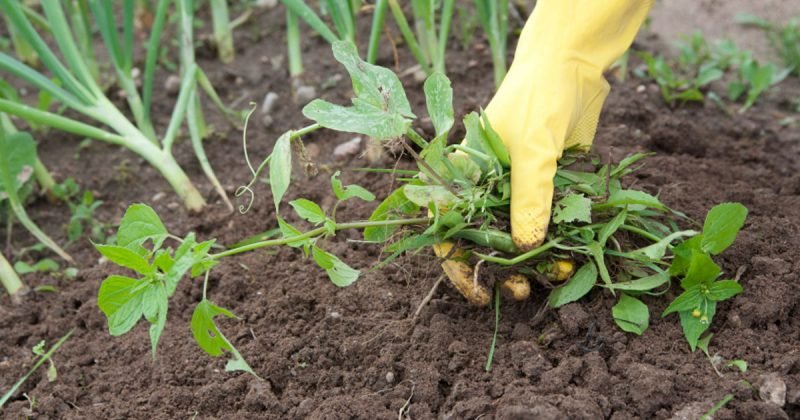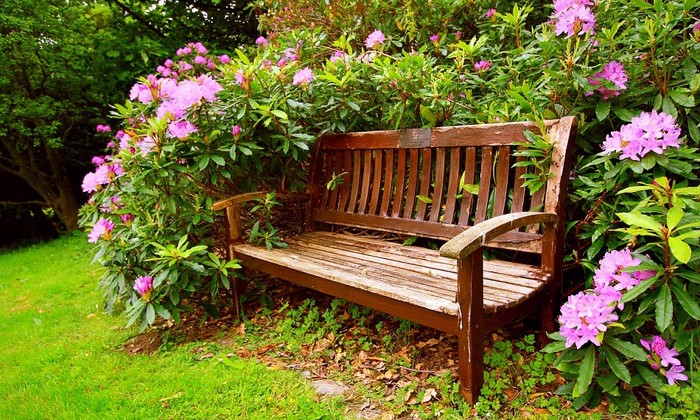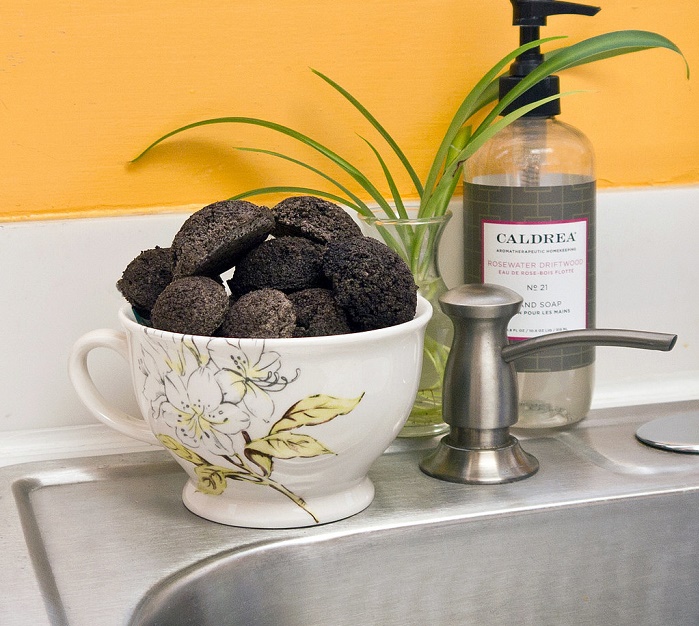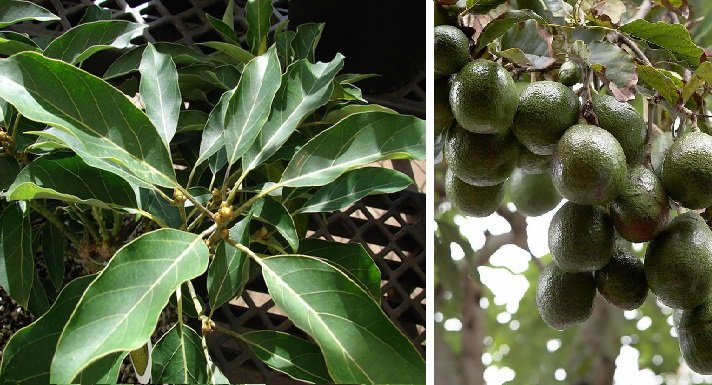Summer is almost here and we can already begin to appreciate the harbingers of its arrival: weeds. They’re in the garden. They are scattered across the lawn. And your presence means it’s time to get to work.

Fortunately, there are ways to eliminate and prevent weeds without resorting to toxic chemicals. Read on for simple ways to control your weed problem.
What’s in a weed?
Ralph Waldo Emerson said that a weed is a plant whose virtues have never been discovered. Before you get down to work on eradicating weeds from your lawn and garden, make sure if what you are trying to eliminate is helpful or not.
Chickweed can serve as a delicate garnish, while dandelion greens, miner’s lettuce, and edible purslane can add a spicy, pleasant flavor to salads. Other weeds have medicinal uses, and it may be worth dedicating a small section of your garden to your medicinal herb kit.
Plants that don’t really belong in your garden generally share the following characteristics:
- Tenacity – they just keep coming back again and again. This includes plants with deep roots or those with a short life cycle that sow seeds quickly and colonize the places where you prefer to grow something more beautiful or edible.
- Invasiveness: Japanese Fallopia, Kudzu, and Convolvulus arvensis are some examples of plants that outnumber native species and quickly take over space, and are difficult to eliminate.
- Toxicity: Poisonous plants are definitely something you don’t want to have in your garden. Belladonna, Heracleum mantegazzianum, buttercup, and more are best kept as far away from your edible plants as possible.
10 methods for natural weed control.
Once you’ve decided which plants you want to remove, consider the following options.
1. Smother weeds with mulch.
Applying a thick layer of mulch to garden areas after manual weeding will prevent weeds from being re-seeded or emerging a second time. For shallow-rooted plants, this mulch will smother weeds and eventually kill the roots without having to weed first, but you should make it thick.
The best mulches are durable and organic. Apply a thick amount to a depth of 10-20 cm. When in doubt, add more mulch.
The best mulches for weed control.
2. Limit the soil plow.
The less you turn and move your soil, the less likely you are to replant weeds in your yard. No-till gardening is popular for this reason, as it keeps dormant weed seeds below the soil surface indefinitely, reducing weeds you have to deal with only those carried by wind, birds, and shoes.
If you do plow your soil, plan this activity to be done at a time when trees and perennials in your area are not filling the surrounding air with seeds and when your soil is dry. Better yet, combine no-tillage methods like mulching in the fall with building your soil through compost and other organic matter in the spring so tillage becomes unnecessary.
3. Cover your floor with anti-weed mesh.
The weed screen prevents weeds from taking root by blocking the soil from weed seeds. Since it is not attractive to the eye, it is designed to sit under a layer of organic mulch, which also protects the fabric from the sun’s rays and extends its life.
Unfortunately, organic mulch will eventually provide the weed seeds with good growing conditions and you will eventually have to weed over your weed net rather than underneath.
Fortunately, the weed netting prevents roots from penetrating the soil below, making manual weeding of these areas quick and easy. Weed netting is most commonly used on garden paths or around perennials, shrubs, and fruits for best results.
The weed screen will smother invading weeds, as long as the screen is wide enough to prevent the plant from crossing under this barrier.
4. Plant cover.
Weeds thrive by establishing themselves and competing with the most desirable garden plants. Defeat them at their own game by planting a ground cover around your home and garden that quickly fills in the exposed soil.
Fast-growing ground covers, such as white clover, will not only reclaim an area, but can also add nutrients to the soil and maintain a bedding until you are ready to plant or landscaping.
Other plants such as barley, oats, wheat, rye, and canola produce compounds that inhibit the growth of other plants. Ground covers worth considering include those listed below.
Common ground covers and their uses:
5. Take advantage of the sun.
Use the heating power of the sun to burn weeds and kill them. Start by cutting out the area to be solarized with your lawnmower or scissors. Cut as close to the ground as possible and soak well with water. Then cover the area with a clear plastic sheet.
Spread the plastic beyond the edges of the area to be solarized and secure with staples or landscaping rocks every 1 meter. Seal the edges by burying them or tucking them into the trench for best results.
After the area has turned brown, let the plastic sit for another week or two. The total time this process will take depends on the amount of sun it receives and the heat you can generate under the plastic sheeting. In most cases, the weeds will die within six to eight weeks.
6. Use corn gluten.
Corn gluten is a by-product of the corn milling process that prevents weeds from forming a root during germination. Corn gluten-treated weeds form only one sprout, and if the amount of water they receive is further limited, they will eventually wilt.
Corn gluten does not work on existing weeds (unless applied in very high concentrations), so it is best applied early in the season as a weed preventative. Use 10 to 20 kilos for every 150 square meters.
You can apply it again in the fall to extend its preventive powers. As an added bonus, corn gluten also works as a fertilizer, which helps make your garden grass strong.
7. Spray weeds with DIY or natural herbicides.
A salt and vinegar solution can kill some weeds when mixed with a few drops of liquid dish soap to allow adhesion. The salt dehydrates the plant, but it will also kill the surrounding plants, so use it only in areas where you don’t want anything to grow (in driveways, walkways, or sidewalk crevices).
A large amount of salt is not good for soil, pets, or wildlife, therefore it only attacks plants that do not respond to other methods by using a garden sprayer and selectively drenching them. Start with a low concentration and work your way up as needed. Table salt (sodium chloride) or rock salt works well for this purpose.
Other homemade herbicide options include applying pickle vinegar (5% acetic acid) with a spray bottle directly to the plant or watering it with boiling water. Adding a few drops of liquid soap to your solution will help break down the waxy coatings on the herb leaves.
8. Weed burner.
Rather than trying to burn the plants individually, the weed burner burns the crowns of the plants enough to cause the tissues to wilt and die. This means that the weed burner does not kill the plant roots right away. Instead, it causes the tops to die enough to deprive the roots of energy.
While this method generally works best on annual weeds, it can also kill deep-rooted perennial weeds (such as thistles and dandelions) by burning the plant when the weeds first emerge (when they have their first set of leaves), and once or twice after that.
Be careful not to get too close to the ground with your burner. Overheating the soil can kill desirable plants growing nearby and friendly microbes in the soil.
Instead, it scorches weed crowns quickly – 1/10 of a second is more than enough. Use only during low fire risk seasons and after rain, or during high dew periods in the morning.
Spray weeded areas with water afterward to ensure safe use. Flame weeding is an effective weed control in patio paths or crevices.
9. Use poultry.
Chickens and ducks are natural weeds and live to scratch, move, and turn the earth to find any houses underneath. As few as half a dozen chickens contained in a stretch of unwanted weeds will quickly remove the plant and root area, leaving the soil exposed and ready for planting.
Ducks will dabble vigorously in damp, spring gardens to find slugs, buds, and tender weeds.
10. Dig by hand.
Digging by hand is the first and best line of defense against most weeds. When combined with the other methods on this list, it is generally a safe way to keep weeds at bay or completely eradicate weeds from an area.
The key to removing weeds by hand is to remove all the roots of the plant, especially if it is rhizomes or stubborn taproots. Use a sturdy tool designed to work deep or in difficult areas. Performing repeated digging sessions will generally challenge even the most persistent plants.
Avoid placing invasive weeds in your compost after removing them from the garden, unless you know your compost will get hot enough to kill the weed seeds. Otherwise, these tenacious plants will survive and thrive, spreading again.








